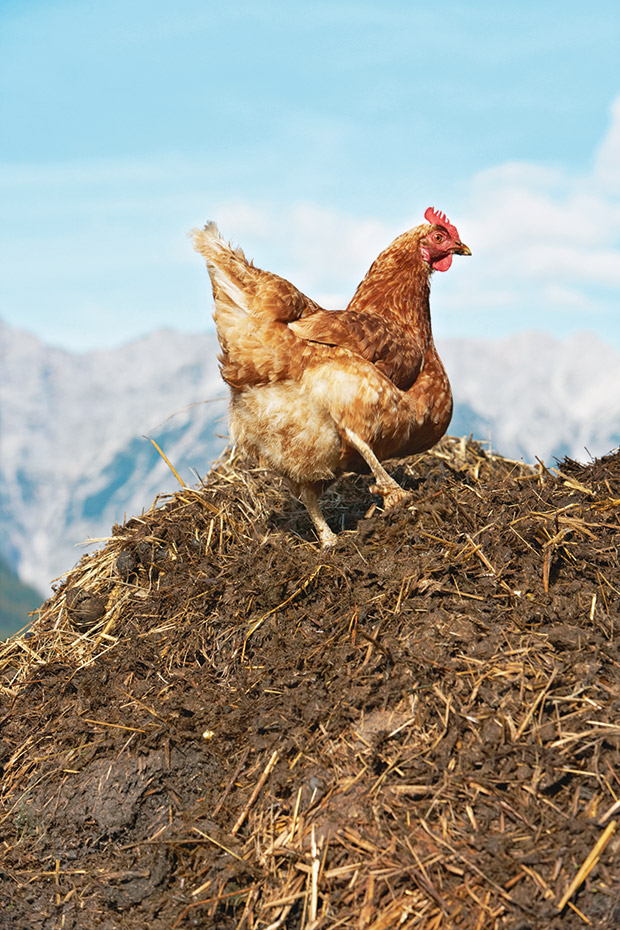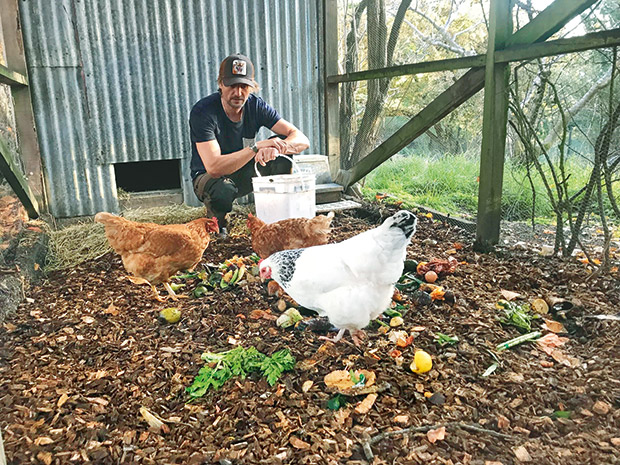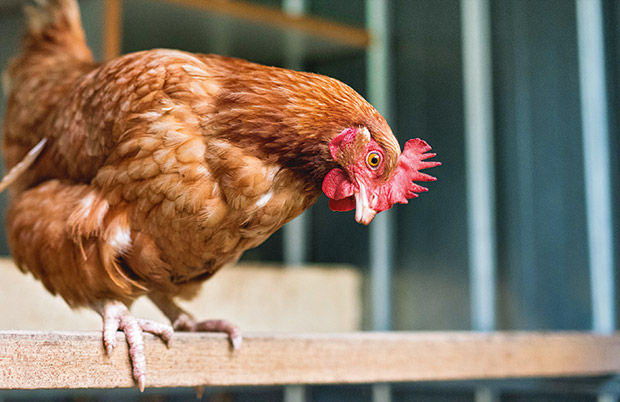3 ways to deal with all that chicken manure (PLUS how to make chicken poo tea for the garden)

Poo can be a smelly problem but if you manage it well, it’s a beneficial addition to pasture and gardens.
Words: Sue Clarke & Nadene Hall
HOW TO MAKE CHICKEN POO TEA
Fresh manure can be used to make chicken poo ‘tea’ which can be watered around plants. The ratio should be about one-third manure to two-thirds water.
• place fresh or partially-composted manure in a hessian sack or old pillow case
• immerse in a drum or rubbish can, weighing the sack down with something heavy
• tie the mouth of the bag with string, leaving long ends which you can hang over the side of the container, then fill the drum with water
• you need to agitate the mix to aerate the contents and prevent the growth of anaerobic bacteria – use the long ends to dunk the bag up and down a few times, preferably daily
• let it mature for around 3 weeks
• remove the bag and transfer its contents to a compost heap or dig into soil; use the liquid to water around the base of growing plants as required.
HOW TO COMPOST MANURE
Manure needs to be part of a balanced heap with a carbon to nitrogen ratio of 30:1. Not enough carbon (eg, wood shavings, cardboard, straw, dried leaves etc) and much of the nitrogen will be lost as gas.

Compost expert Ben Elms uses a deep layer of bark on the floor of his run. He adds the daily kitchen scraps to it, and his birds dig it in. Once a year, he digs it out and uses it around fruit trees.
A well-constructed compost heap will heat up in the centre to 55-65°C which kills off most bacteria, viruses, and even coccidia and worm eggs in the manure. It won’t kill some forms of listeria and clostridiums.
Turn it a couple of times to ensure all the manure has been exposed to the heat of the pile, then cover and leave to mature for three months before use.
THE DEEP LITTER METHOD
This is where the coop floor essentially becomes a composting system, and it’s the most efficient method of dealing with poultry manure.
The airier the litter, the better it will compost. Ideally, you want a thick layer of wood shavings on the coop floor, 10-15cm deep. Shavings absorb moisture quickly. The thickness of the layer helps to insulate the floor, helping the coop
(and the composting layers) to stay warm.
Other options:
Sawdust: ok, but tends to pack down quickly unless turned frequently
Pine peelings/bark, or shredded paper: ok but needs to be a deeper layer (15cm+), and turned frequently
Dry straw: ok if turned regularly, but won’t cope if it gets too wet
Hay: don’t use, as it doesn’t absorb moisture well, packs flat when wet, and can harbour moulds
Once litter has manure in it, and the birds are turning it over regularly, it will heat up, similar to a compost heap, but not as hot.
The longer you leave a deep litter system, the more it will decompose. Heat, oxygen and bacteria turn the manure and shavings into a fine, almost, powder-like consistency, making it easy to handle.
5 TIPS TO A GOOD LITTER SYSTEM

1. The mixture needs to be turned frequently to prevent the surface from forming a caked layer that stops the composting process. You can encourage your flock to do this by scattering a grain feed around it each day so they scratch at it.
2. You will get a build-up of droppings under perches. This needs to be raked out over the entire floor. A few seconds of raking each morning is the easiest way to manage it.
3. You need to keep the floor dry. Prevent rain from blowing into the coop, with a porch over the door, or by hanging strips of cloth or plastic. Ensure drinkers are spill-proof or placed away from the litter area.
4. Keep a deeper layer of at least 15cm around any entry point to help absorb higher moisture levels. You may need to put in a 15cm-high ‘lip’ at the bottom of a door (lay a piece of wood across it) to stop litter from falling out or being spread around too thinly.
5. Add, fresh, dry litter regularly; when you clean out nest boxes, add the nest material to the floor litter.
A well-managed deep litter floor can stay in place for up to a year with no smell. When dug out, litter can be added directly to the top of garden soil, spread over pasture or used around orchard trees.
Love this story? Subscribe now!
 This article first appeared in NZ Lifestyle Block Magazine.
This article first appeared in NZ Lifestyle Block Magazine.
